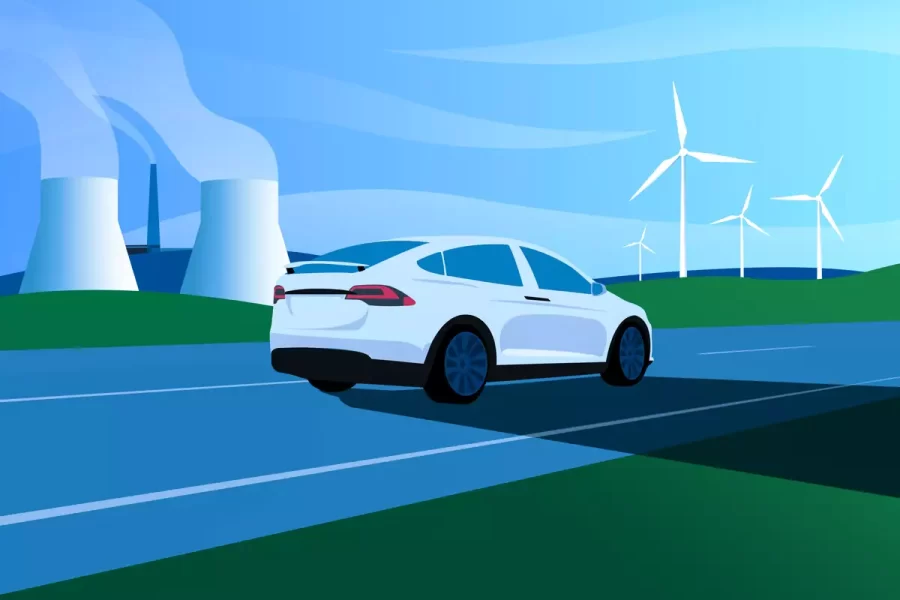California’s Push Against Climate Change
California’s EV mandate to take action against harmful greenhouse gases. How will this affect our environment?
October 18, 2022
From wildfires and heat waves to unpredictable atmospheric rivers, our state is ravaged by disaster after disaster. Our state government has taken many steps to slow this crisis, notable ones being the California Environmental Quality Act which warned of the environmental effects of government policy, and the Global Warming Solutions Act of 2006 to reduce greenhouse gas emissions. The most recent of these is a mandate banning sales of new gasoline-powered vehicles by 2035.
In 2020, Governor Newsom ordered the California Air Resources Board to develop regulations to cease the sale of new gasoline cars, while increasing the sales of electric (EV) and other zero-emission cars by 2035. It’s important to understand the lasting effects of these decisions, such as the dramatic change in the car market, CO2 emissions, and EV demand within California, and how the decisions may come to impact other states should they choose to adopt the policies outlined in this executive order.
Fifteen states have already adopted California’s Low-Emissions Vehicle criteria, pollutant and greenhouse gas emission regulations, and their Zero-Emission Vehicle Regulations under Section 177 of the Clean Air Act, which regulates air emissions. They are likely to follow suit in California’s most recent goals as well.
When asked about her initial thoughts on the mandate, Ms. Chortek, an environmental science teacher at Mitty, replied, “I think it’s exciting to see governments get involved in the climate crisis, because I think a lot of young people are concerned about this and it’s nice to see that urgency is being reflected.”
Gasoline-powered cars emit masses of greenhouse gases, which are a major cause of climate change due to their ability to trap heat in the atmosphere. On the benefits of switching to EV cars, Ms. Chortek explains, “Right off the bat… you would have a decrease in overall fossil fuel emissions… harmful greenhouse gases would not be entering the atmosphere.”
However, this change does not come without challenges. Ms. Chortek explains that the harvesting of materials to make the cars themselves, specifically heavy metals like cobalt and lithium, is extremely harmful to the environment, leading to potential water pollution, and increased water usage in drought-impacted areas.
Additionally, Ms. Chortek states, “You have to consider the disposal or end-of-life of the car, because when those batteries die or cars are turned into scrap metal, oftentimes those batteries end up in a landfill. Landfills are a very large source of greenhouse gases.”
Furthermore, to be on track to support this many electric vehicles, California would have to build another estimated 1 million charging stations across the state, funded by Newsom’s 6-year 10 billion dollar funding package introduced in his January budget blueprint.
If California’s proposal is to pass, it must first be approved by the U.S. Environmental Protection Agency (EPA). This is due to the Clean Air Act which requires the EPA to establish standards that ensure the maximum degree of reduction in emissions. The Biden Administration has signaled that they will likely grant their permission to move forward with these proposals.
Then implemented, California car dealerships would have to work toward the 2035 goal of 100% zero-emission car sales by 2035. The first step to that would be the 51% goal in 2028, and the 68% goal in 2030.
However, despite the roadblocks and challenges, California is on track to be the world leader in reducing greenhouse gas emissions, and its actions will hopefully influence many along the way. In fact, many states already follow California’s regulations and criteria for greenhouse emissions and EVs, and these recent mandates are the new target for much of the country.
